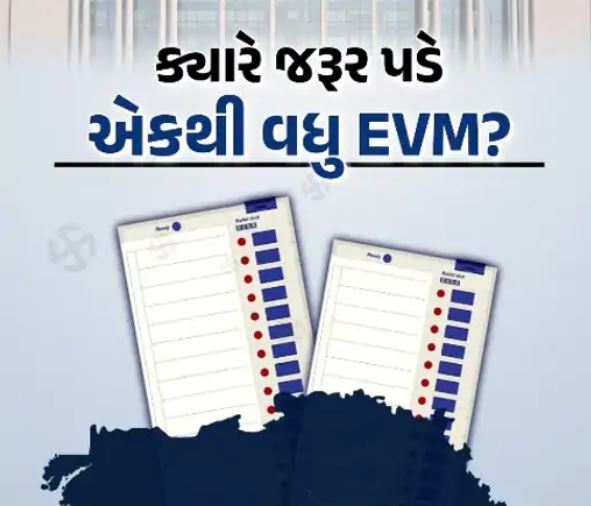Why double EVM in only 6 places in whole Gujarat? How many votes in an EVM?
Why double EVM in only 6 places in whole Gujarat? How many votes in an EVM? | Gujarat Assembly elections are being held in two phases, as some seats have more than 16 candidates, more than one EVM is used. It is very important to know how the voter will vote if there is more than one EVM unit at a seat so that the voter does not get confused by seeing more than one ballot unit. EVMs are widely used during elections in India, the largest democracy. Especially now, EVMs are used in minor and major elections. Then this time in the Gujarat assembly elections, two EVM units are being used in some seats, a detailed report should be seen.
History of EVM
It is the year 1892. Local elections were being held in Lockport, a city near New York, USA. Voters flocked to vote in large numbers in these elections. Not because a popular leader jumped into the polls, but because for the first time, instead of marking a piece of paper, one had to press a button and return from the election booth. People voted in the election, counting of votes was also done and the election system gave a report that this voting machine has been used successfully. And that's when the historic event of voting by voting machine happened for the first time in the world. However, this voting machine was not used in any election for the next four years. But, in 1896, in the election held in the city of Rochester, New York, all the booths were used again and after that the voting machine started in earnest.
Use of EVMs in India
In the Asian countries including India, voting machines were introduced in elections at the end of the 20th century. EVMs are used in all elections. At the same time, the demand for EVMs made in India is increasing outside India as well. M.B. Hanifa is credited as India's first EVM designer. Hanifa prepared and introduced the first EVM on October 15, 1980. The basic design of voting machines used in India today and shipped abroad follows Hanifa's pattern. According to the machine designed by Hanifa, the first experiment by the Election Commission of India was done in 1982 in the Legislative Assembly of Peravaru constituency in Kerala. EVMs were used at about 50 booths simultaneously, but the lack of awareness about it caused more inconvenience than convenience. Even though the voters were specifically briefed, there was confusion at the booth. By conducting scattered experiments in small and large elections of the states, the attitude of waiting until the people get proper awareness was decided. In the 1999 general elections, EVMs were used in about 75 percent of the polling booths in India.
First case of EVM in India
By 2004, voting machines had gained widespread acceptance in the Indian public. In the general elections held in 2004, voting was done through EVMs for the first time across India. This was a historic thing in the history of EVM after 1892. This was the first case of any country in the world having EVMs in all the booths in its major elections. In this way, India established a new record in its name. After that, even during the 2009 Lok Sabha elections, voting was done through EVMs all over India.
Why the need for more than one EVM?
A total of 16 candidates are listed in the EVM for voting. Two EVM units are installed when the number of candidates exceeds 16 in a seat. Usually a maximum of four EVM units can be connected together. So that the voter has to press a button to select one candidate from four EVMs simultaneously.



No comments